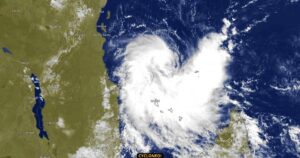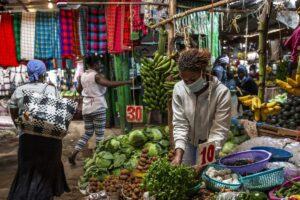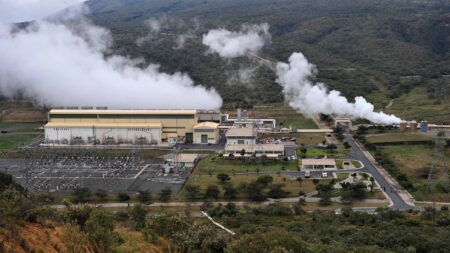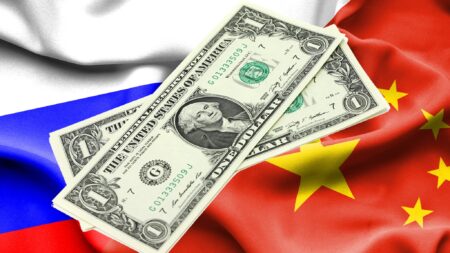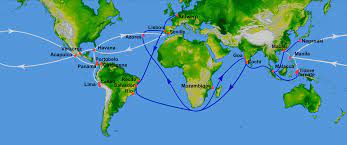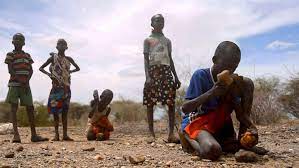- Kenya, Tanzania braces for torrential floods as Cyclone Hidaya approaches
- EAC monetary affairs committee to discuss single currency progress in Juba talks
- Transport and food prices drive down Kenya’s inflation to 5% in April
- Payment for ransomware attacks increase by 500 per cent in one year
- History beckons as push for Kenya’s President Ruto to address US Congress gathers pace
- IMF’s Sub-Saharan Africa economic forecast shows 1.2 percent GDP growth
- The US Congress proposes extending Agoa to 2041, covering all African countries
- Millions at risk of famine as fuel tax row halts UN aid operations in South Sudan
Browsing: premium
- Public-Private Partnerships have allowed drilling and geothermal energy production capacity to rise.
- Combined with hydro, these two sources contribute 65.62 percent of the total, while wind and solar account for 18.69 percent.
- While Kenya Power has tried to revise energy prices in the country, analysts observe that expanding geothermal investments will provide the country with cheaper power for future expansion.
The African technology landscape is speedily evolving pertinently defying history in its swift adoption of the Fourth Industrial Revolution technologies (4IR), given that the continent was marginalized during the previous three industrial revolutions. Several countries in the continent have already established their Centers for the Fourth Industrial Revolution (C4IR), with the most recent being Rwanda in mid-2022; as it pursues an economic model founded on technology akin to the the Asian Tigers’ pertinently Singapore.
Some technology trends that will shape Africa in 2023 include:
-
Metaverse
The Metaverse will be among the key technologies that will continue to shape Africa’s tech scene. The Metaverse refers to a virtual-reality space in which users can interact with a computer-generated environment, together with other users. Businesses and individuals are predicted to continue exploring this digital environment and consider how they can leverage on its opportunities, to create immersive and efficient experiences to consumers. This …
- EAC Partner States need to fast-track implementation regulations on the liberalisation of air transport
- An extra 155,000 jobs and US$1.3 billion in annual GDP would be created if 12 countries opened their skies.
- Africa has formed the Single African Air Transport Market (SAATM) to spearhead a single unified air transport market to advance the liberalization of civil aviation in Africa.
In the spirit of creating a single market and increased integration of Africa’s 54 nations, stakeholders want airlines operating within the continent to lower fares.
Recent research by the International Air Transport Association (IATA) showed that ‘if just 12 key Africa countries opened their markets and increased connectivity, an extra 155,000 jobs and US$1.3 billion in annual GDP would be created in those countries.’
These are significant figures by any measure and IATA, the trade association for the world’s airlines, representing some 260 members, maintains that lowering flight prices in …
Official data has shown that the cost of transacting in international currencies is often 2 or 3 per cent higher than dealing in local alternatives. The higher cost often creates significant international trade obstacles. Ultimately, the progressive decision-making of the Russian government could save Africa from the damaging effects of a strong dollar. Consequently, international trade will become accessible to businesses in Africa. This will boost economic growth in the respective partner countries.…
The rapid snowballing of Africa’s rare earths metal production is set to become the world’s alternative source in 2023 and beyond, as global demand surges and world powers seek to wean off their dependence on China amid a new geopolitical multipolar world order. Africa’s vast reserves of rare earth metals have come under the radar of world powers fueled by the devastation emanating from the climate change crisis and calls for a drastic reduction in the growth and operations of extractive industries.
Furthermore, the race to net-zero emissions compounded by increased climate-induced natural disasters has intensified the green energy transition, instigating another scramble for Africa’s resources rare earth metals are at the heart of the race to green energy as well as providing opportunities for massive economic growth by injecting much-needed revenues to finance core socio-economic objectives in the continent.
Rare earth elements (REEs) refers to a group of 17 …
Tanzania is planning to increase its production of coal by more than three million tonnes annually as it rumps up its drive towards clean energy.
The country made its plans public at the start of the year through the Tanzania Mining Commission (TMC) which announced that the country has already increased it coal output from 1.5 million tonnes in the 2020/21 period to 1.56 million tonnes by the second half of this financial year 2022/23.
TMC Executive Secretary, Engineer Yahya Samamba, said Tanzania earned 211 million US dollars from the 2020/21 production of 1.5 million tones. He also made it clear that majority of this output was for export with more than 800,000 tonnes for the export market and a little over 60,000 tonnes consumed locally.
Also Read: Equity: Fossil fuel funding dries up as IFC buys bank’s stake
Notably, Tanzania’s coal is exported largely to India, Poland and the …
World trade is increasingly relying on new technologies to meet demand and Asia is likely to take centre stage in the future of global trade.
Analysts predict Southeast Asia will be the world’s busiest trade area by trade volume.
The International Monetary Fund (IMF) reports that billions of dollars are already been invested in warehouses and distribution centers across with ports investing in automated vehicles and cranes to increase efficiency and cut costs in the long term.
Trade in the modern world is global. Flow of goods, services, capital, people and data connects us all. Value chains of even the smallest of daily consumer products are global. Raw, a raw material from Africa is developed in Asia and consumed in the Americas -, that is the modern world and countries that wish to be competitive must adopt.
However, this view of a ‘world village’ is changing, in the wake …
At the close of 2022, between September to December, food prices soared around the world and with no signs of this abating in 2023, countries in Africa will have to move with speed to mitigate a looming food crisis.
Food inflation is particularly pronounced and severe in low-income and middle-income countries. According to most recent sector reports, up to 94.1% of low-income countries around the world suffer food inflation.
With increasing food prices, the cost of living is increasing, and it is no better in lower-middle-income countries of which 92.9% are contending with food inflation.
Also Read: Starvation, death threaten Horn of Africa stability
Even the upper-middle-income countries are also facing food inflation with 89% reporting unprecedented double-digit inflation.
According to the International Monetary Fund (IMF), maize prices in December 2022 went up by 27% while wheat shot up 13% higher compared to the same period in 2021.
As we …
Moving from one point to another has never been easier and more convenient as transportation or mobility applications have come to play. In Tanzania, where internet penetration stands at around 25 percent, digital mobility services simplify transportation, thanks to Bolt and bber ride-hailing services.
However, this was not always the case, as in early 2022, Uber decided to leave Tanzania. Bolt also limited its operations due to regulatory concerns and the increase in transportation taxes imposed by authorities.
With population expansions in cities such as Dar es Salaam, Arusha, Mwanza, Kilimanjaro, and Dodoma, digital mobility services are again getting attention and usage over time and space.
Tanzania is witnessing the stark rise of locally developed solutions such as Paisha, Twende, and Linkee, which are challenging the status quo established by Uber and Bolt, which are progressively resuming their services.
Ghana finds itself in the classic emerging market trap. This comes from owing too much in someone else’s currency when the global economic tide turns. One ought not to read too much into an emerging economy getting creative with money or to confuse the confiscation of private assets with a more conventional process of fiscal retrenchment that would gain IMF approval. If the plan succeeds, Ghana may have saved itself from an economic meltdown, especially in a period widely considered as economic turmoil, per the World Bank’s analysis of the 2023 economy.…
